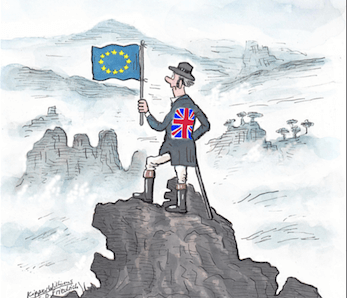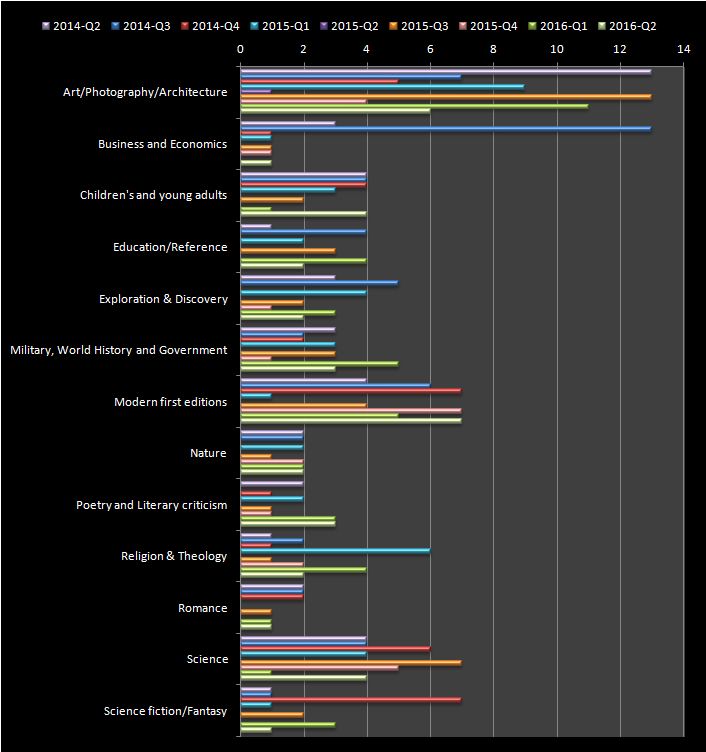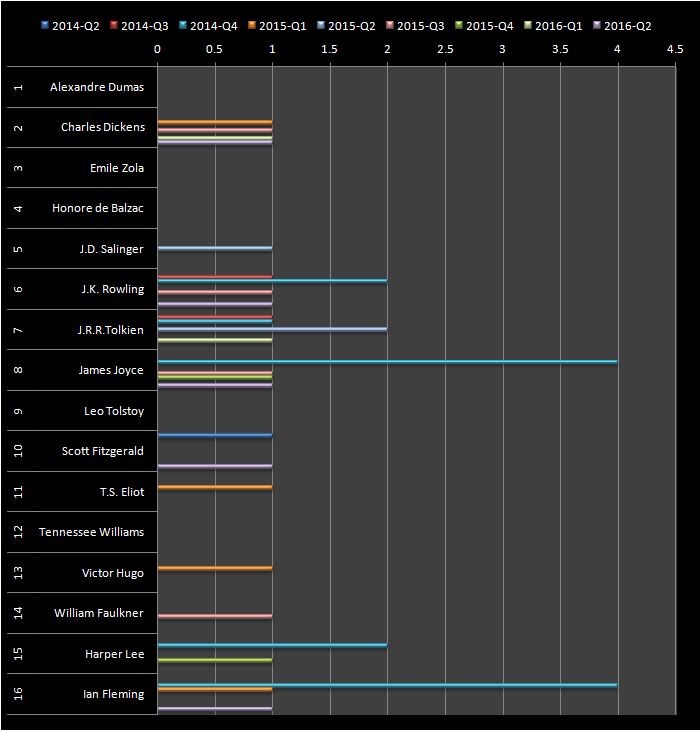The 2nd quarter of 2016 felt the tremors caused by the UK affirmative Brexit vote. The subsequent drop in the value of the British currency delivered a rather controlled above normal interest in rare books offered in British pounds. Opportunistic buyers took advantage of the lower dollar or euro to sterling exchange rate, mostly through on-line international transactions. While it is quite difficult to predict how the post-Brexit market dynamics will affect the rare book marketplace, it is almost quite certain that the majority of book trade transactions will remain unaffected by currency moves.
The Rare Book Sales Monitor does not adjust to counteract the effect of currency fluctuations. Its comparative analysis is based on sales as recorded and converted to USD on the day of the sale. The scope of the analysis is not to provide a metric for ROI for rare book collections after taking into account prevailing economic conditions such as the rate of inflation or currency fluctuations, but rather to provide a means to help identify trends within a particular genre or author’s activity in the rare book trade.
Outside European cohesion, rare book trades, this year, could be affected by two anniversaries:
– 100th year anniversary of the Dada movement
– 400th year anniversary of Shakespeare’s death
Shakespeare and Dada events held throughout the year at various cities and museums around the world have been raising awareness on the importance of works produced during the author’s and movement’s lives. Despite the fact that it was just 2 years ago that we celebrated the 450th anniversary of Shakespeare’s birth, his colossal image keeps shining. However, the RBSM is quite insensitive to anniversaries in addition to currency fluctuations. Its primary focus is to record and compare sales of identical, regularly traded rare books in order to identify possible trends at an early stage of development.
During the months of the 2nd quarter of this year, sales amounted to a much broader genre distribution than usual. The historically super active genre of Art/Photography/Architecture was predominantly consistent with the level of interest demonstrated by those of the Modern First Editions, Science and the Children’s categories. In the author breakdown, Darwin continued the trend recorded during the 1st quarter, while all time favorites such as J.K. Rowling, James Joyce and Ian Fleming marked their presence also.
Titles contributing to the overall genre/author price increase during the months of April, May and June include:
1. Orwell, George. Nineteen Eighty-Four. London: Secker & Warburg, 1949
2. Rand, Ayn; The Fountainhead. Indianapolis and New York: Bobbs-Merrill, 1943.
3. Darwin, Charles. On the Origin of Species by Means of Natural Selection, or the Preservation of Favoured Races in the Struggle for Life. London: John Murray, 1859.
4. Eluard, Paul – Man Ray. Facile. Paris: G.L.M., 1935.
5. Shakespeare, William. Comedies, Histories, and Tragedies, edited by John Heminge and Henry Condell. London: Isaac Jaggard, and Edward Blount at the Charges of W. Jaggard, Ed. Blount, I. Smithweeke, and W. Aspley, 1623.
6. Churchill, Winston. The Collected Works of Sir Winston Churchill. London: Library of Imperial History, 1973.
7. Darwin, Charles. On the Origin of Species by Means of Natural Selection, or the Preservation of Favoured Races in the Struggle for Life. London: John Murray, 1860 (2nd edition).
8. Fitzgerald, F. Scott. Tales of the Jazz Age. New York: Scribner’s, 1922.
9. Rowling J. K. Harry Potter Series. The Philosopher’s Stone. The Chamber of Secrets. The Prisoner of Azkaban. The Goblet of Fire. The Order of The Phoenix, The Half-Blood Prince and The Deathly Hallows. London: Bloomsbury, 1999-2005.
10. Matisse, Henri; Joyce James. Ulysses. New York: The Limited Editions Club, 1935.



{ 0 comments… add one now }